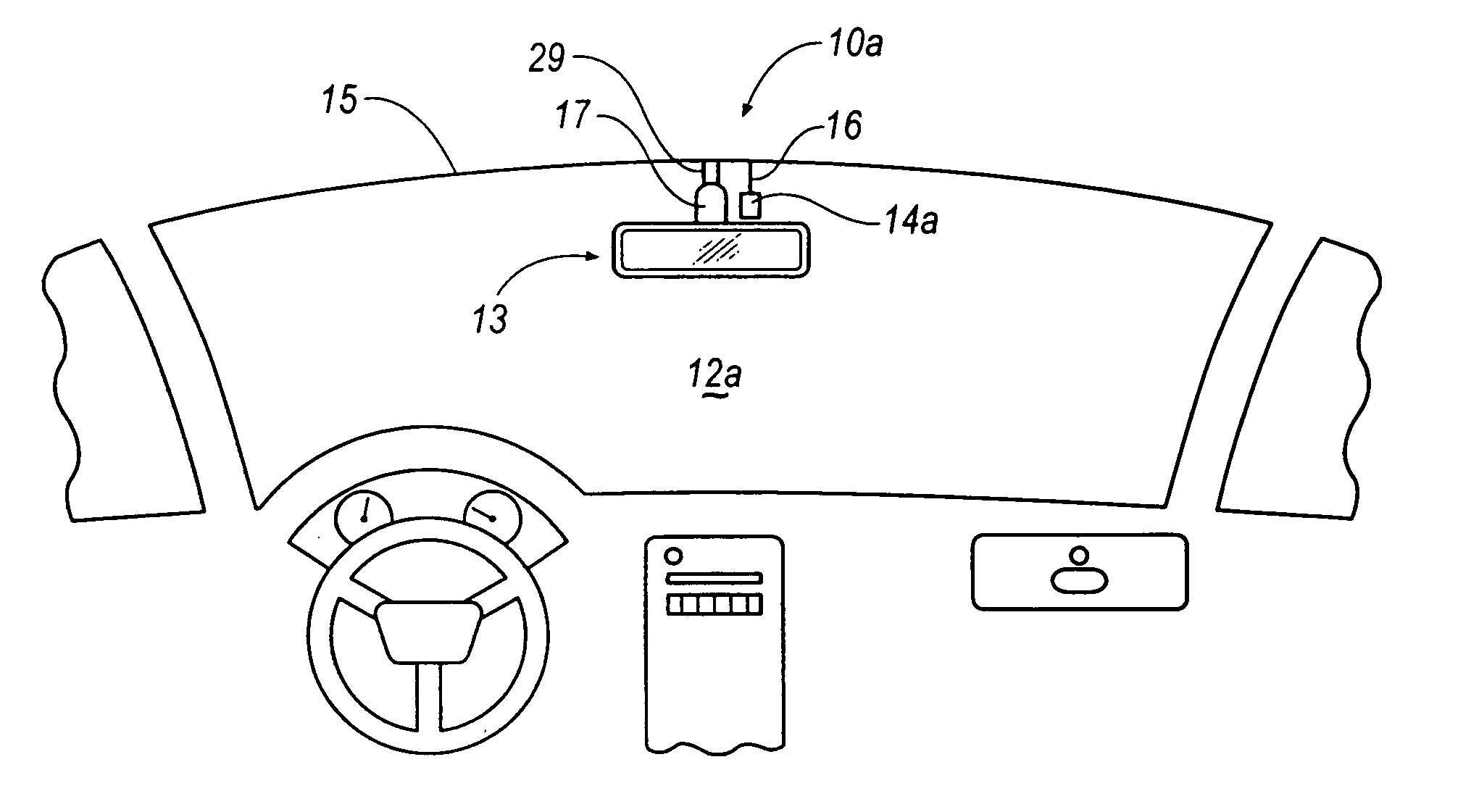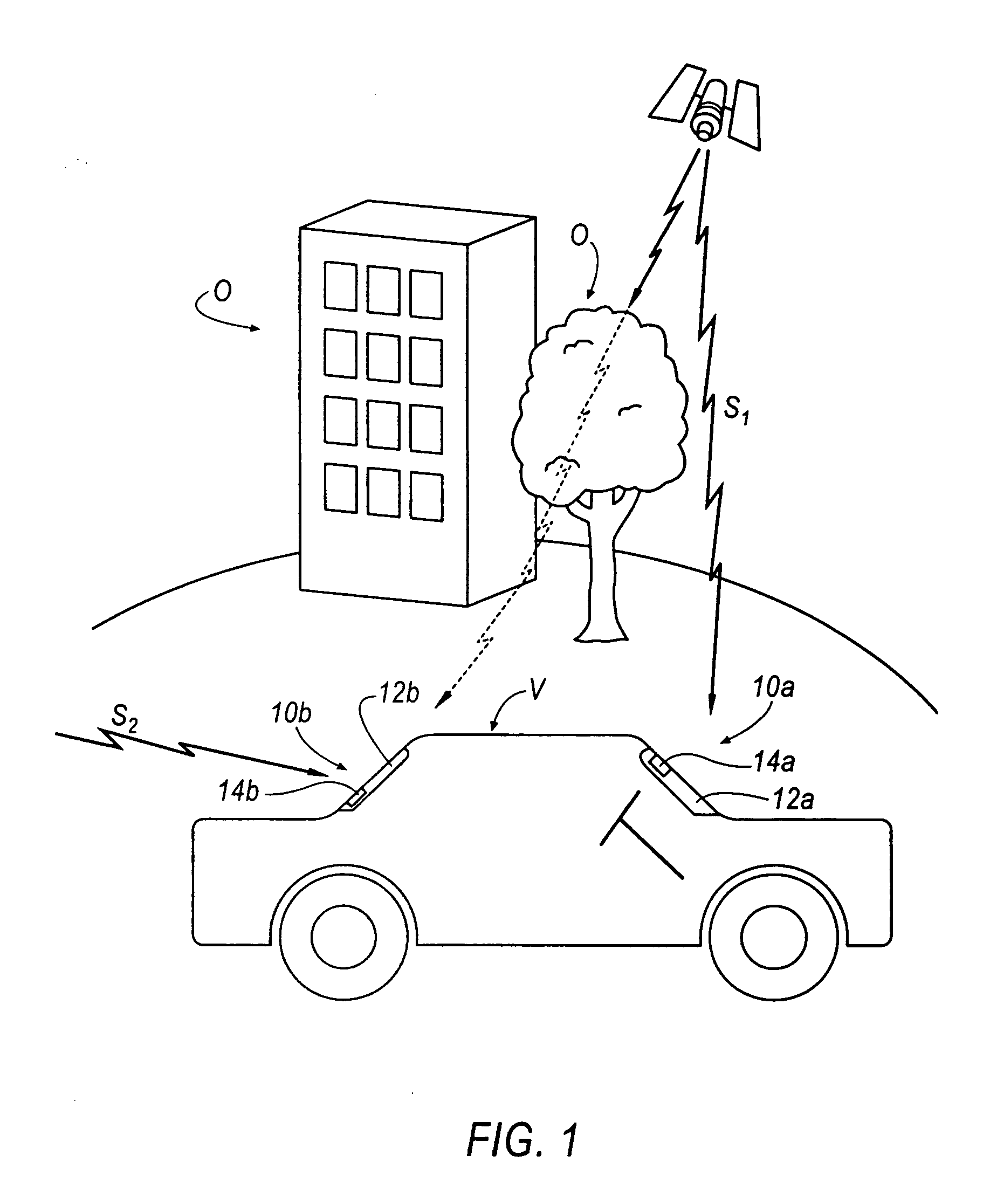Vehicular glass-mount antenna and system
a glass-mount antenna and glass-mount technology, applied in the field of vehicle glass-mount antennas, can solve the problems of high cost, high cost, and difficult electromagnetic coupling of such antennas in sdars applications, and achieve the effects of high cost, high cost, and high cos
- Summary
- Abstract
- Description
- Claims
- Application Information
AI Technical Summary
Problems solved by technology
Method used
Image
Examples
Embodiment Construction
[0024] The above described disadvantages are overcome and a number of advantages are realized by inventive antenna systems, which are generally illustrated at 10a, 10b in FIGS. 1-3. As illustrated in FIG. 1, a vehicle, V, includes a front windshield glass 12a and rear windshield glass 12b each including antenna units 14a, 14b, respectively. Referring to FIG. 2, the antenna unit 14a is shown proximate a rear-view mirror assembly 13 at a top portion 15 of the front windshield glass 12a that meets a headliner (not shown). The location of headliner provides the shortest path to route and hide wires 16 extending from the antenna unit 14a and rear-view mirror assembly 13. When implemented near the top portion 15, the antenna unit 14a should not come into direct contact with the vehicle body so as to ensure that the antenna unit 14a is not shorted out. As seen in FIG. 3, the antenna unit 14b is located near a corner 18 of the rear windshield glass 12b such that defroster wires 19 are route...
PUM
| Property | Measurement | Unit |
|---|---|---|
| Angle | aaaaa | aaaaa |
| Angle | aaaaa | aaaaa |
| Angle | aaaaa | aaaaa |
Abstract
Description
Claims
Application Information
 Login to View More
Login to View More - R&D
- Intellectual Property
- Life Sciences
- Materials
- Tech Scout
- Unparalleled Data Quality
- Higher Quality Content
- 60% Fewer Hallucinations
Browse by: Latest US Patents, China's latest patents, Technical Efficacy Thesaurus, Application Domain, Technology Topic, Popular Technical Reports.
© 2025 PatSnap. All rights reserved.Legal|Privacy policy|Modern Slavery Act Transparency Statement|Sitemap|About US| Contact US: help@patsnap.com



